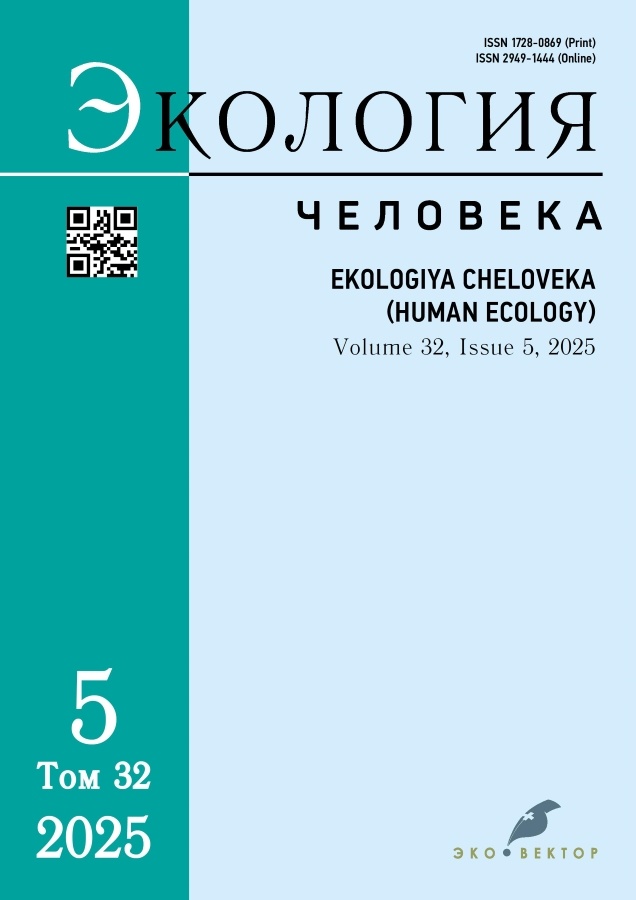在生物医学研究的设计与结果解释中应用有向无环图的可能性
- 作者: Krieger E.A.1, Postoev V.A.1, Kudryavtsev A.V.1, Unguryanu T.N.1, Grjibovski A.M.1,2,3
-
隶属关系:
- Northern State Medical University
- North-Eastern Federal University named after M.K. Ammosov
- Northern (Arctic) Federal University named after M.V. Lomonosov
- 期: 卷 32, 编号 5 (2025)
- 页面: 300-314
- 栏目: REVIEWS
- URL: https://bakhtiniada.ru/1728-0869/article/view/314590
- DOI: https://doi.org/10.17816/humeco683466
- EDN: https://elibrary.ru/MXPLRC
- ID: 314590
如何引用文章
全文:
详细
本文介绍了一种在流行病学和生物医学研究中构建与应用有向无环图(Directed Acyclic Graphs, DAGs)的算法。DAGs是一种用于建模变量之间复杂关系的图示工具,尤其适用于生物医学领域,在该领域中,对因果关系的准确评估依赖于对潜在混杂因素的充分考虑。DAGs在科学假设的构建与变量关系结构的理解中具有重要意义,其依据包括文献分析与既有研究成果。应用DAGs可提高研究设计与数据分析的质量,为变量选择提供理论依据,从而优化数学模型的构建过程。DAGs可用于在因果结构中明确变量(如混杂变量、中介变量、碰撞变量)相对于暴露(潜在风险因素)与结局(疾病或状态)的作用,从而识别进行校正所需的最小充分变量集,并降低分析误差风险。文章强调了利用现有软件工具实践应用DAGs的重要性,并展示了其在生物医学研究中具体使用的实例。最后,提出将DAGs纳入生物医学研究流程的建议,以促进现代多变量统计分析方法的推广,提高研究结果的可解释性和重复性。
作者简介
Ekaterina A. Krieger
Northern State Medical University
Email: kate-krieger@mail.ru
ORCID iD: 0000-0001-5179-5737
SPIN 代码: 2686-7226
MD, Cand. Sci. (Medicine), PhD, Associate Professor
俄罗斯联邦, ArkhangelskVitaly A. Postoev
Northern State Medical University
Email: ispha@nsmu.ru
ORCID iD: 0000-0003-4982-4169
SPIN 代码: 6070-2486
MD, Cand. Sci. (Medicine), PhD, Associate Professor
俄罗斯联邦, ArkhangelskAlexander V. Kudryavtsev
Northern State Medical University
Email: ispha09@gmail.com
ORCID iD: 0000-0001-8902-8947
SPIN 代码: 9296-2930
PhD
俄罗斯联邦, ArkhangelskTatiana N. Unguryanu
Northern State Medical University
Email: unguryanu_tn@mail.ru
ORCID iD: 0000-0001-8936-7324
SPIN 代码: 7358-1674
MD, Dr. Sci. (Medicine), PhD, Associate Professor
俄罗斯联邦, ArkhangelskAndrey M. Grjibovski
Northern State Medical University; North-Eastern Federal University named after M.K. Ammosov; Northern (Arctic) Federal University named after M.V. Lomonosov
编辑信件的主要联系方式.
Email: andrej.grjibovski@gmail.com
ORCID iD: 0000-0002-5464-0498
SPIN 代码: 5118-0081
MD, PhD
俄罗斯联邦, Arkhangelsk; Yakutsk; Arkhangelsk参考
- Mitkin NA, Drachev SN, Krieger EA, et al. Sample size calculation for cross-sectional studies. Ekologiya cheloveka (Human Ecology). 2023;30(7):509–522. doi: 10.17816/humeco569406 EDN: LOEJVM
- Greenland S, Pearl J, Robins JM. Causal diagrams for epidemiologic research. Epidemiology. 1999;10(1):37–48.
- Shrier I, Platt RW. Reducing bias through directed acyclic graphs. BMC Med Res Methodol. 2008;8:70. doi: 10.1186/1471-2288-8-70
- VanderWeele TJ. Principles of confounder selection. Eur J Epidemiol. 2019;34(3):211–219. doi: 10.1007/s10654-019-00494-6
- Foraita R, Spallek J, Zeeb H. Directed acyclic graphs. In: Ahrens W, Pigeot I, editors. Handbook of Epidemiology. New York: Springer; 2014. P. 1481–1517. doi: 10.1007/978-0-387-09834-0_65
- Kornaropoulos EM, Tollis IG, DAG View: an approach for visualizing large graphs. In: Didimo W, Patrignani M, editors. Graph Drawing. GD 2012. Lecture Notes in Computer Science. Vol. 7704. Berlin, Germany: Springer; 2013. P. 499–510. doi: 10.1007/978-3-642-36763-2_44
- Textor J, Zander BVD, Gilthorpe MS, et al. Robust causal inference using directed acyclic graphs: the R package ‘dagitty’. Int J Epidemiol. 2016;45(6):1887–1894. doi: 10.1093/ije/dyw341
- Porta MS, Greenland S, Hernánet M, et al. A dictionary of epidemiology. 6th ed. New York: Oxford University Press; 2014. 343 p.
- Szklo M, Nieto FJ. Epidemiology: Beyond the Basics. 4th ed. Sudbury: Jones & Bartlett Learning, LLC; 2018. 489 p.
- Bursac Z, Gauss CH, Williams DK, et al. Purposeful selection of variables in logistic regression. Source Code Biol Med. 2008;3:17. doi: 10.1186/1751-0473-3-17
- Textor J, Liśkiewicz M. Adjustment criteria in causal diagrams: an algorithmic perspective. In: Proceedings of the Twenty-Seventh Conference on Uncertainty in Artificial Intelligence. Barcelona, Spain: AUAI Press; 2011. doi: 10.48550/arXiv.1202.3764
- Lee PH. Is a cutoff of 10% appropriate for the change-in-estimate criterion of confounder identification? J Epidemiol. 2014;24(2):161–167. doi: 10.2188/jea.je20130062
- Heinze G, Wallisch C, Dunkler D. Variable selection — A review and recommendations for the practicing statistician. Biom J. 2018;60(3):431–449. doi: 10.1002/bimj.201700067
- Bailey LC, Forrest CB, Zhang P, et al. Association of antibiotics in infancy with early childhood obesity. JAMA Pediatr. 2014;168(11):1063–1069. doi: 10.1001/jamapediatrics.2014.1539
- Li DK, Chen H, Ferber J, et al. Infection and antibiotic use in infancy and risk of childhood obesity: a longitudinal birth cohort study. Lancet Diabetes Endocrinol. 2017;5(1):18–25. doi: 10.1016/S2213-8587(16)30281-9
- Dekkers OM, Laugesen K, Groenwold RHH. Directed acyclic graphs in clinical research. Eur J Endocrinol. 2024;190(4):E5–E7.
- Williamson EJ, Walker AJ, Bhaskaran K, et al. Factors associated with COVID-19-related death using OpenSAFELY. Nature. 2020;584(7821):430–436. doi: 10.1038/s41586-020-2521-4
- Sattar N, McInnes IB, McMurray JJV. Obesity is a risk factor for severe COVID-19 infection: multiple potential mechanisms. Circulation. 2020;142(1):4–6. doi: 10.1161/CIRCULATIONAHA.120.047659
- Hamer M, Kivimäki M, Gale CR, Batty GD. Lifestyle risk factors, inflammatory mechanisms, and COVID-19 hospitalization: A community-based cohort study of 387,109 adults in UK. Brain Behav Immun. 2020;87:184–187. doi: 10.1016/j.bbi.2020.05.059
- Fang L, Karakiulakis G, Roth M. Are patients with hypertension and diabetes mellitus at increased risk for COVID-19 infection? Lancet Respir Med. 2020;8(4):e21. doi: 10.1016/S2213-2600(20)30116-8
- Griffith GJ, Morris TT, Tudball MJ, et al. Collider bias undermines our understanding of COVID-19 disease risk and severity. Nat Commun. 2020;11(1):5749. doi: 10.1038/s41467-020-19478-2
- Lash MP, Fink AK. Applying quantitative bias analysis to epidemiologic data. New York: Springer; 2011. 192 р.
补充文件














